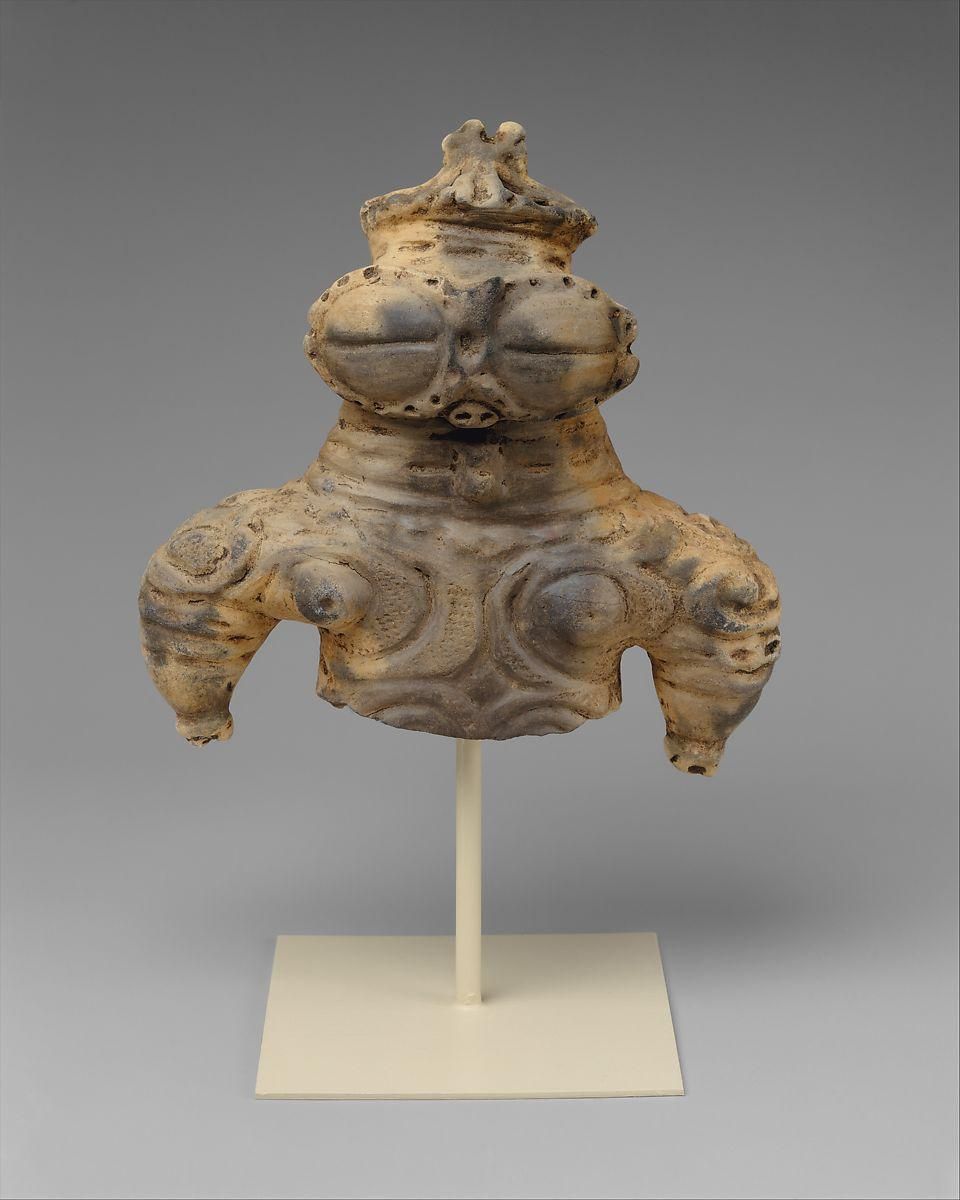
土偶
Unknown Artist
This stylized, hollow figurine (dogū) of a female is representative of the type found in the Tōhoku region of northern Honshu and made during the Late and Final Jōmon periods. The most arresting aspect of these figurines is their large bisected coffeebean-shaped eyes. While the true meaning of this convention remains unknown, the eyes are often likened to the snow goggles worn by the Inuit of North America. The nose and mouth are merely suggested by small holes. A crown sits atop the figure's head, and her body is decorated with deeply incised lines and areas impressed with cord-markings that may represent tattoos. Other, more complete examples of this type have fleshy torsos with bare navels above thick, sturdy legs. The emphasis on the pointed breasts and generous hips of these figures suggests that they functioned as fertility symbols.
Credit: The Harry G. C. Packard Collection of Asian Art, Gift of Harry G. C. Packard, and Purchase, Fletcher, Rogers, Harris Brisbane Dick, and Louis V. Bell Funds, Joseph Pulitzer Bequest, and The Annenberg Fund Inc. Gift, 1975
1000-300 BC
Earthenware with cord-marked and incised decoration (tōhoku region)
16.5 in
1975.268.191
Image and text © Metropolitan Museum of Art, 2019
Where you'll find this

The Metropolitan Museum of Art
Permanent collection
